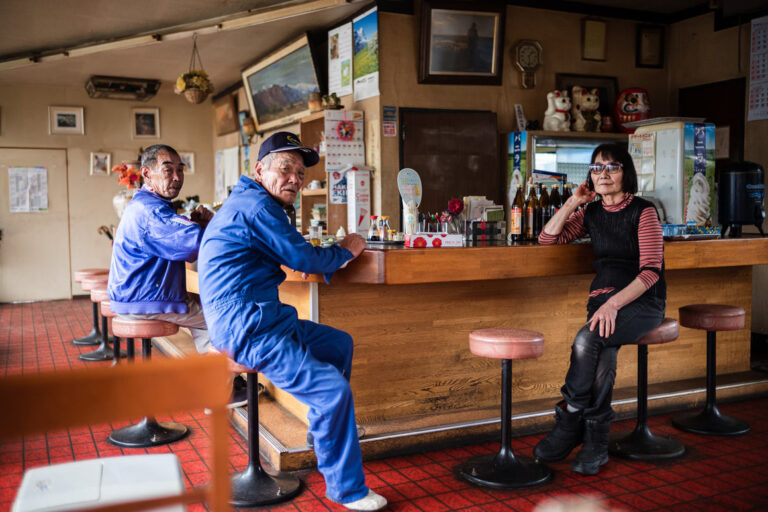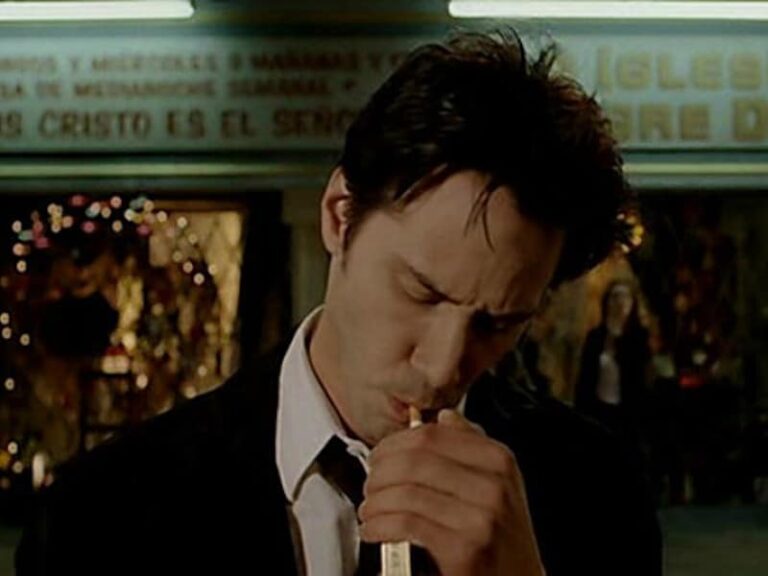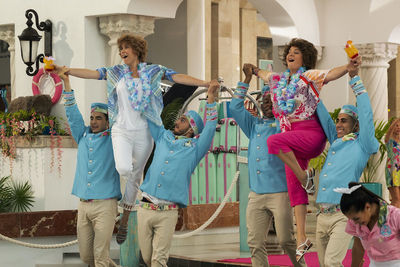Movies to Watch if You Like ‘An American Pickle’
Welcome to Movie DNA, a column that recognizes the direct and indirect cinematic roots of new movies. Learn some film history, become a more well-rounded viewer, and enjoy likeminded works of the past. This entry recommends movies to watch after An American Pickle.
Seth Rogen plays opposite himself in the HBO Max original An American Pickle, a quaint but often ridiculous comedy about a man from 1919 who falls into a pickling vat and awakens in the present day. Rogen plays both that character and the man’s great-grandson as they first connect and bond over their familial relation and then clash in an amusingly convoluted plot that takes familial estrangement to the extreme.
Given its plot, An American Pickle is a perfect subject for this column, which celebrates the lineage of stories presented cinematically. While directly based on a short story titled “Sell Out,” written by Simon Rich and published in The New Yorker in 2013, its roots are obviously in another famous tale from two-hundred years ago. The following list recognizes that heritage as well as other genetic links and some additional relevant films worth watching next.
Rip Van Winkle (1903)
My first idea was to only recommend movies that came out during the time of Herschel Greenbaum’s deep sleep in the brine. But it’s actually more interesting to consider that he could have seen this particular movie if there was someplace showing it in the late 1910s. The four-minute film is a compilation of even shorter shorts produced as a series in 1896 by William K. L. Dickson and the American Mutoscope Company, the first known adaptation of Washington Irving’s story. There were other adaptations released nearer to Herschel’s time of arrival in America, but Dickson’s has survived better, as preserved as part of the National Film Registry.
Here is the order of the original films: Rip’s Toast, Rip Meets the Dwarf, Rip and the Dwarf, Rip Leaving Sleepy Hollow, Rip’s Toast to Hudson and Crew, Rip’s Twenty Years’ Sleep, Awakening of Rip, Rip Passing Over Hill.
The story of Rip Van Winkle is the obvious forebear to anything involving an awakening after many years — from the Brendan Fraser double-punch of Encino Man and Blast from the Past to Captain America’s fate in the Marvel Cinematic Universe. But there’s more to Irving’s story than just a one-way time-travel premise. And the title character only sleeps for twenty years. The whole thing is based around the idea that he sleeps through the American Revolution. Similarly, I guess, Herschel sleeps through a lot, including major wars and revolutions, the entire existence of the Soviet Union, and the tragedy of the Holocaust. Another big difference, though: Rip wakes up glad to his wife has died during his sleep; Herschel is devastated about his.
The Playhouse (1921)
Buster Keaton wasn’t the first person to play multiple roles in a film (not even in his previous instances, 1917’s The Rough House and 1918’s Out West). And he wasn’t even the first to do so where the characters are on screen at the same time using trick photography — see Georges Méliès for maybe that origin plus the hundreds made during the “fad” of double-exposure and split-screen dual performances of the 1910s. But Keaton’s work in The Playhouse is particularly impressive. And just how he pulled off the special effects was a secret for many years.
In its famous opening sequence, the silent comedian plays every part, including members of a theater orchestra seamlessly appearing three to a shot. He also dresses in drag to play a number of women in the audience and, unfortunately, he does play a couple of Black performers, in blackface. The most Busters we get on-screen at the same time: nine, all on stage as members of a minstrel show. More enjoyable, though, are the two-person shots in which Keaton briefly converses with himself. Not a film first, but arguably a film best.
A Stolen Life (1946) and The Dark Mirror (1946)
A few decades after the dual-role trend of the 1910s, another surge of double-duty films arrived in the late 1930s through the 1940s. This time, the fad was focused mostly on women’s films (exceptions include the 1945 Danny Kaye as a ghost twin comedy Wonder Man). Two of the peak examples arrived months apart in 1946: Warner’s A Stolen Life, starring Bette Davis and Bette Davis, and Universal’s The Dark Mirror, which starred Olivia de Havilland times two.
This was a period when mistaken identity among lookalikes and twins wasn’t done so much for comedy as it was for intentional frame-ups within the stories. Twins tended to be a mix of good and evil. In A Stolen Life, Davis plays sisters, one of whom steals the other’s identity when that twin drowns. Cinematographer Ernest Haller developed new ways of doubling the actress’ performance, and they reunited later for the similar twin thriller Dead Ringer, which progressed the effect further.
The Dark Mirror also involves some switcheroos between sisters, as well as their taking advantage of the situation to provide an alibi for the evil one. When that doesn’t work out, the bad twin does try to frame the good twin while also posing as her sister. I was reminded of these movies and the crimes within during the moment in An American Pickle when Herschel shaves his beard and pretends to be his great-grandson, Ben, in order to get Ben arrested by border patrol officers and then get away himself.
Fiddler on the Roof (1971)
If I were a rich man, I would cast Seth Rogen in a production of Fiddler on the Roof. It’s hard to watch him as Herschel in An American Pickle and not think of Tevye, the protagonist of this classic musical. The show takes place in a setting similar to Herschel’s fictional village, though here it’s 1905 rather than in 1919. Tevye and Herschel are both old-fashioned and relatively poor Orthodox Ashkenazi Jewish men who favor tradition in spite of all the outside influence and change entering their lives — more so for Herschel since he’s forced into a modern world one-hundred years beyond his origins.
Fiddler on the Roof almost received a direct tribute in An American Pickle. The movie ends with a mid-credits scene where Ben is introducing Hershel to the movie Yentl. Rogen says they also did a version in which they watch this Norman Jewison-helmed adaptation of the musical, but the scene was funnier with Yentl. I think they made the right choice since Fiddler on the Roof is a little too easy and obvious and I can’t imagine what would be amusing enough about it for Herschel to experience.






